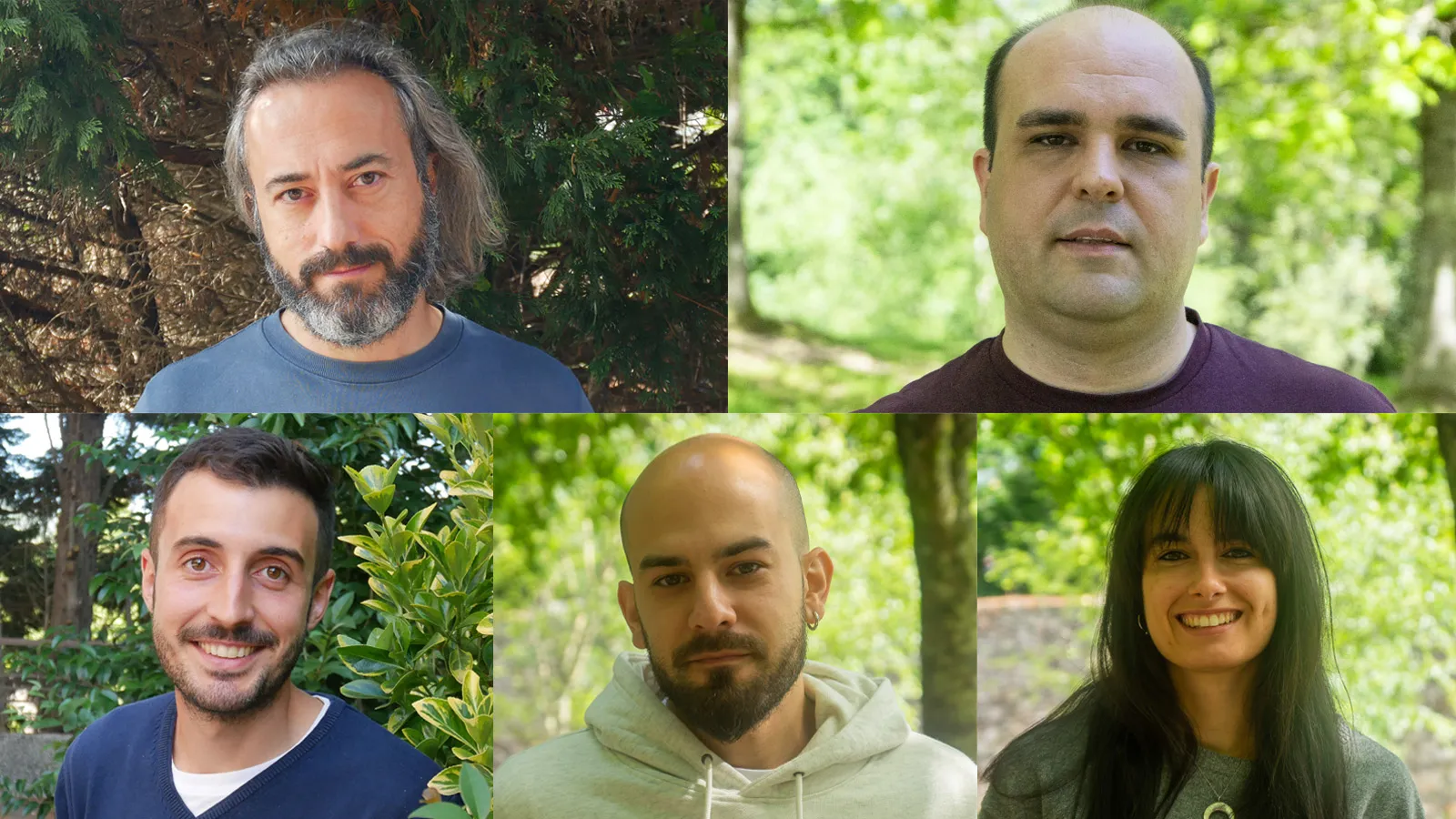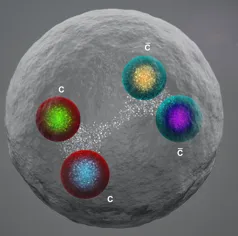‘Nature’ publica un traballo pioneiro sobre fisión nuclear no que participa o IGFAE



01.07.2020

A colaboración do experimento LHCb, na que participa o IGFAE, observou un tipo de partícula composta por catro quarks nunca antes vista. O achado, presentado nun recente seminario no CERN e descrito nun artigo publicado hoxe no servidor arXiv, é probable que sexa o primeiro dunha clase de partículas non descuberta previamente.
O achado axudará a entender mellor as formas complexas nas que os quarks agrúpanse formando partículas compostas como os protóns e neutróns que se achan no núcleo do átomo.
Os quarks combínanse entre si en grupos de dous ou tres para formar as partículas chamadas ‘hadróns’. Durante décadas, con todo, a física teórica predixo a existencia de hadróns formados por catro e por cinco quarks, descritos como ‘tetraquarks’ e ‘pentaquarks’. Nos últimos anos, varios experimentos como LHCb confirmaron a existencia de varios destes hadróns exóticos. Estas partículas feitas de combinacións inusuais de quarks son un ‘laboratorio’ perfecto para estudar unha das catro forzas fundamentais da natureza, a forza forte que mantén unidos a protóns e neutróns no núcleo atómico que forma a materia. Coñecer mellor esta interacción é tamén esencial para determinar se un proceso novo, inesperado, é un sinal de nova física ou só física estándar.
“As partículas formadas por catro quarks son de seu exóticas, pero a que vimos de descubrir é a primeira formada por catro quarks pesados do mesmo tipo, concretamente dous quarks charm e dous antiquarks charm”, revela o portavoz da colaboración LHCb,Giovanni Passaleva, próximo a deixar o cargo. “Ata o de agora, LHCb e outros experimentos só observaran tetraquarks con dous quarks pesados como moito, e ningún con máis de dous quarks do mesmo tipo”.
“Estas partículas pesadas exóticas proporcionan casos extremos e teoricamente bastante simples cos que probar modelos que logo se poden utilizar para explicar a natureza das partículas de materia ordinaria, como protóns ou neutróns. Por tanto, é moi emocionante velos aparecer en colisións no LHC por primeira vez”, explica o próximo portavoz de LHCb, Chris Parkes.
O equipo de LHCb atopou o novo tetraquark usando a técnica de buscar un exceso nas colisións, coñecido como ‘bump’, sobre o fondo de eventos. Oculto nos datos do primeiro e segundo ciclo de funcionamento (run) do Gran Colisionador de Hadróns (LHC), entre os anos 2009-2013 e 2015-2018, respectivamente, os investigadores detectaron un exceso (bump) na distribución de masa de pares de partículas J/ψ, que consisten nun quark charm e un antiquark charm. Este exceso ten unha significación estatística de máis de cinco sigmas, o limiar para partir do cal se considera un descubrimento dunha nova partícula, e corresponde a unha masa acorde coa predita para partículas compostas por catro quarks.
Do mesmo xeito que con anteriores descubrimentos de tetraquarks, non está completamente claro se a nova partícula é un verdadeiro tetraquark, isto é, un sistema de catro quarks estreitamente ligados entre sí, ou un par de dúas partículas formadas por dous quarks ligados debilmente, como a estrutura dunha molécula. En calquera caso, o novo tetraquark axudará aos físicos teóricos a probar modelos de cromodinámica cuántica (QCD), a teoría da forza forte.
Máis información:
Web de colaboración do experimento LHCb
Observation of structure in the J/ψ-pair mass spectrum
LHCb discovers a new type of tetraquark at CERN